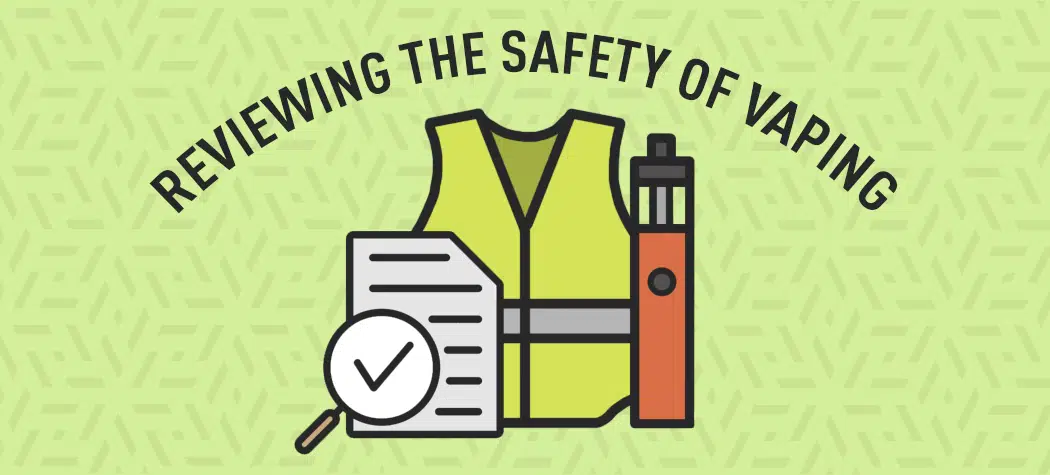Industry Research, Vaping News
Reviewing The Safety of Vaping
We are reviewing the safety of Vaping. With over ten years of use in the UK, some people still object to the NHS supporting vaping as a quit smoking option. What ought to be clear to everyone, smoking is very dangerous so UK public health bodies all fully endorse the use of electronic cigarettes to reduce the harm caused by tobacco. We review the evidence to date regarding the relative safety of e-cigs.

Escaping The Bad
The tip of a cigarette is burning tobacco leaves at 900 degrees Celsius. This releases nicotine and produces a noticeable tobacco smell, but also creates tar, carbon monoxide and multiple toxins. The tar, carbon monoxide, and poisonous toxins create the danger of smoking and act to make the nicotine more addictive than it otherwise would be.
Embracing The Better
Vaping heats e-liquid, there is no tobacco, and nothing gets burned. No tar is produced. No carbon monoxide is produced. Almost none of the cigarette smoke toxins are produced and the ones that are can only be found in much-reduced quantities.
The Danger of Nicotine
Most people use ecigs with nicotine-containing e-liquids.
People associate nicotine with smoking and therefore believe it is as dangerous. It doesn’t matter if you think this, an alarming number of doctors also believe this is the case – but they are wrong.
Nicotine raises the heart rate, and blood pressure, and narrows blood vessels in the same way that exercise or drinking a coffee does. The Royal Society of Public Health says: “Nicotine is no more harmful to health than caffeine.”
The Danger of Vegetable Glycerine and Propylene Glycol
E-liquid consists mainly of vegetable glycerine (termed VG) and propylene glycol (termed PG). PG tends to be used to carry the flavourings, VG produces clouds and makes the vape experience smoother.
PG is used in inhalers, the UK Committee On Toxicity Of Chemicals In Food, Consumer Products And The Environment assesses its toxicity to be extremely low. VG is used in multiple pharmaceutical products.
Flavour Danger
All flavour agents have to meet the specifications laid down by the Medicines and Healthcare Products Regulatory Agency. Legal, nicotine-containing UK e-liquids must conform to British standards and not contain substances such as diacetyl.
This is a result of the extensive amount of testing that has taken place to determine what happens when you heat these flavour compounds – a lot of which was already known from looking at what happens to flavour agents during cooking.
The Toxins in Vape Liquid
Public Health England has stated:
- The constituents of cigarette smoke that harm health – including carcinogens – are either absent in e-cigarette vapour or, if present, they are mostly at levels much below 5% of smoking doses (mostly below 1% and far below safety limits for occupational exposure)
- The main chemicals present in e-cigarettes only have not been associated with any serious risk
Conclusions
All of the above is why the Royal College of Physicians, the Royal College of Nursing, the Royal College of GPs, and the NHS all agree that vaping is “at least 95% safer” than smoking.

